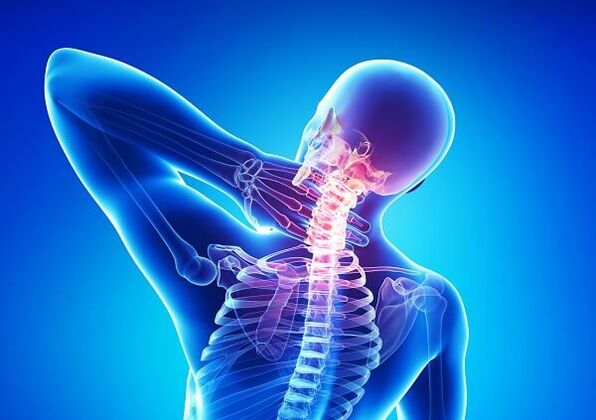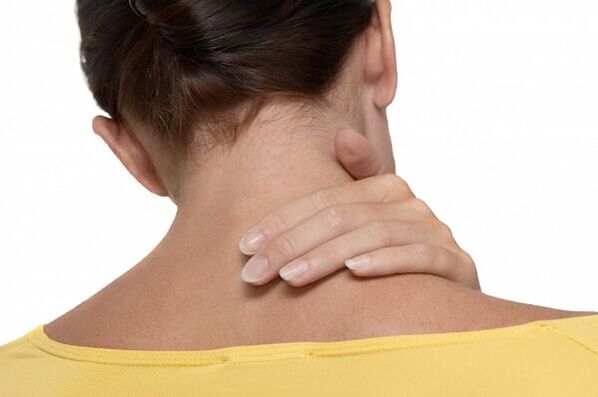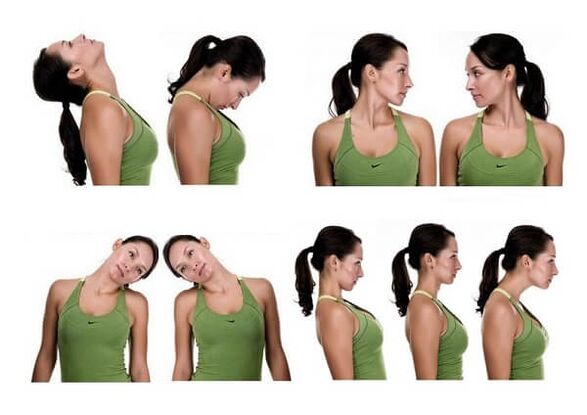
Osteochondrosis of the cervix can be considered one of the most common pathologies of the spine today. At the same time, according to statistics, it can be noted that more and more young people are suffering from this degenerative disease, previously it was thought that osteochondrosis is found only in older people. It is worth knowing about the symptoms of cervical osteochondrosis and treatment, because the earlier the pathology is detected and therapy is started, the less likely it is to develop complications.
Cervical osteochondrosis is a degenerative disease of the cervical spine in which the intervertebral disc is destroyed. The pathology develops quite slowly, but we must remember that most of the degenerative changes are irreversible.
Stages of the disease
The following stages of cervical osteochondrosis are distinguished from the initial changes, which cause virtually no pain and other symptoms until complete destruction of the intervertebral disc:
- Preclinical stage. At this stage there are no visible signs of degenerative changes, they occur at the biochemical level. The patient does not experience pain or any other change in his condition.
- The stage in which degenerative changes in the nucleus pulp increase. Changes in the pulp of the nucleus cause destabilization of the cervical spine, disrupting the structure of the fibrous disc. The patient begins to experience mild pain and other symptoms.
- The stage of complete destruction of annulus fibrosis. There is protrusion of the intervertebral disc - the nucleus pulposus begins to extend beyond the destroyed annulus fibrosis, causing cervical spine displacements and subluxations. Pain syndrome and other symptoms of the disease increase significantly.
- Stage of intervertebral disc tissue regeneration. Replacement of the nucleus pulposus begins with fibrous tissue, the tissues of the intervertebral disc scars, and the structures surrounding the spinal column are involved in degenerative processes. With the development of intervertebral disc fibrosis, the pain and instability disappear, but this condition does not mean recovery.
ᲛImportant!Periodically, exacerbation of the disease may occur with an increase in symptoms, usually after physical exertion.
The earlier treatment of the disease begins, the easier it is to achieve the cessation of degenerative changes. At the same time, the clinical manifestations of cervical osteochondrosis differ in their diversity, it is often impossible to diagnose the disease without a complete diagnosis, X-ray, MRI or CT.
Symptoms
The main difficulty in identifying cervical osteochondrosis is insufficiently expressed and there are no obvious symptoms. In addition to pain syndrome, there are numerous vegetative symptoms that can be referred to as diseases of the nervous or circulatory system, so often they go on to identify osteochondrosis with a misdiagnosis.
Autonomic symptoms in men are often considered less severe than pain. Perhaps this is due to the fact that men are less likely to consult a doctor with symptoms of neurological diseases. Vegetative symptoms related to the emotional sphere are more pronounced in women.
In general, the following symptoms usually refer to the main symptoms of cervical osteochondrosis and they should all occur at the same time:
- Pain syndrome. The pain occurs in the neck and shoulders, extends to the shoulder blades. It can also spread to the back of the head. Also, osteochondrosis can cause headaches and dizziness.
- Herbal symptoms. Due to the nerve endings in the cervix and the blood vessels in the cervix, they form in the cervical spine. Headache, dizziness, nausea, palpitations, panic attack-like symptoms are common.
- Feeling of numbness, limited mobility in the upper extremities, around the shoulder blades. This symptom is also found due to the cervical nerve endings.
These are the main symptoms found in cervical osteochondrosis, often the pain syndrome is so mild that the cause of the weakness begins in the field of neurology.

How to cure cervical osteochondrosis at home
Osteochondrosis of the cervix can be treated in the early stages of the disease. Therapy should be comprehensive, it includes taking painkillers, therapeutic exercises, massage and a number of other procedures. Each component of the therapy is essential for complete recovery.
Medications
Analgesics are usually needed, starting without a nonsteroidal anti-inflammatory drug. If such medications do not help, they resort to blockades - injections of anesthetic at the site of injury.
Topical corticosteroid ointments may also be used. You have to be careful about using them, because if used irrationally, they can cause harm. Such funds are strictly prescribed, their own use is prohibited.
Also, with severe vegetative symptoms, remedies can be used to improve the blood supply to the brain. They are prescribed in rare cases. Sometimes, in addition to them, daytime tranquilizers are used to help suppress depressive symptoms caused by tremors in the nerve endings.
ᲛMassage
In osteochondrosis it is important to massage the cervical spine, it helps to restore blood circulation, tense tense muscles. Several different massage techniques are used, self-massage is allowed at home, to perform it you need to sit in a sitting position with your hands on your neck on both sides.
ᲛImportant!Under no circumstances should you apply pressure to the spine, otherwise the pain syndrome may worsen.
With hitting movements, you should move your head to the shoulders, try to press but not cause pain. The procedure should last for 10 to 15 minutes.
In gymnastics
Exercise is very important for cervical osteochondrosis to maintain muscle tone and mobility of the cervical spine. With this disease, the neck muscles need to be trained.
The easiest exercise - in a sitting position, you should put your hands under your chin, pressing slightly upwards. At the same time, you have to resist his pressure. The exercise should be performed for fifteen seconds, over time, the duration should increase.

Diet
In case of osteochondrosis it is recommended to eat more properly, include more fresh vegetables and fruits in the diet. I also recommend getting more seafood and fermented dairy products to replenish the amount of substances needed for the normal functioning of the muscular system.
Treatment with folk remedies
Folk remedies are not very effective in treating cervical osteochondrosis, but there are several recipes that can help with this disease. First of all, various compresses are recommended, one of the most effective being potato based. Raw potatoes should be grated, add a teaspoon of honey, put on the sore spot, cover with cling film.
Potatoes can be replaced with unleavened dough. In the absence of inflammation, the compress can be covered with a warm cloth to achieve a greater effect. You can also lubricate the cervical region with honey during the massage and arrange a touch with it, honey gives the best effect
With a combination of folk remedies and other methods of treatment you can achieve the best results.

















































